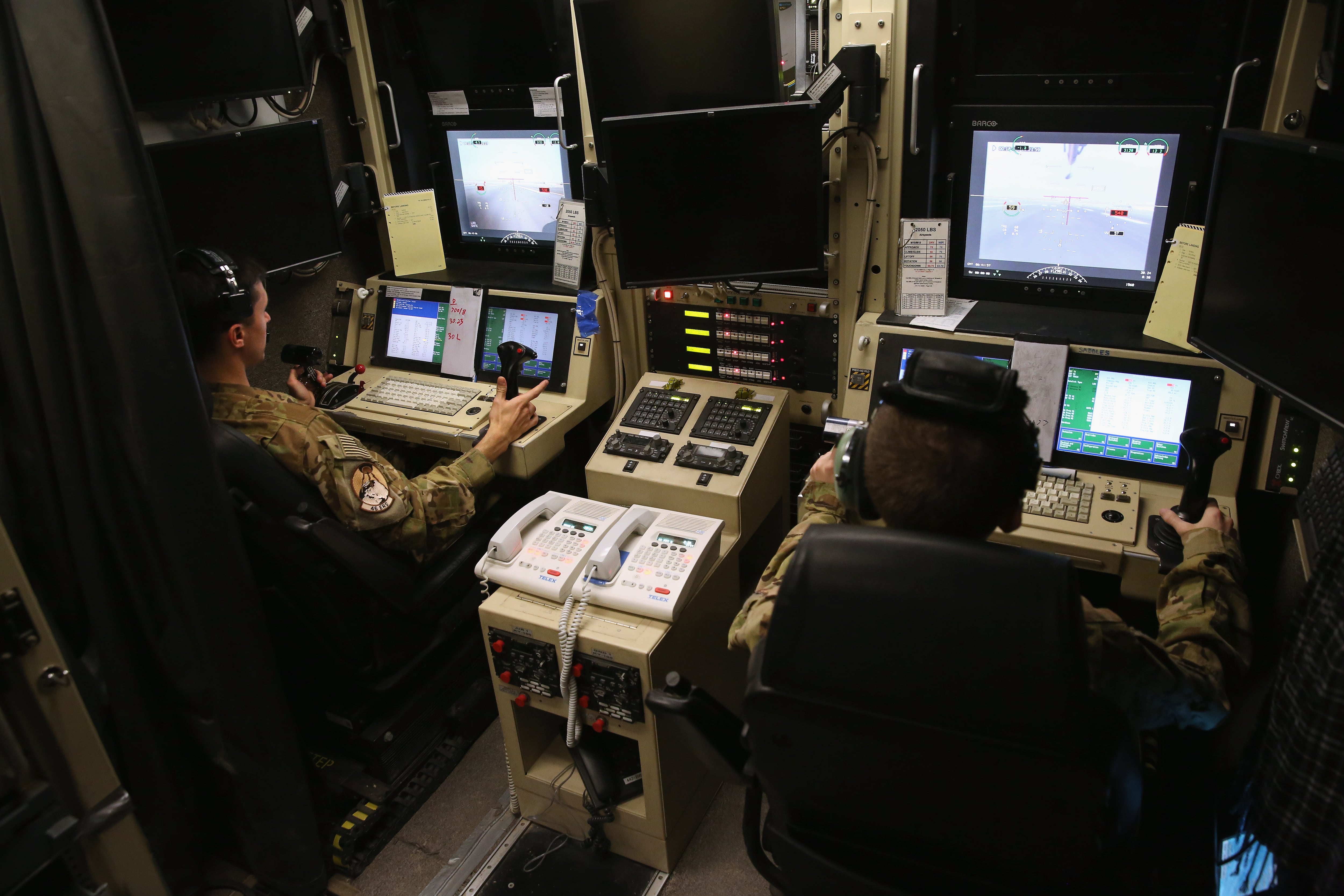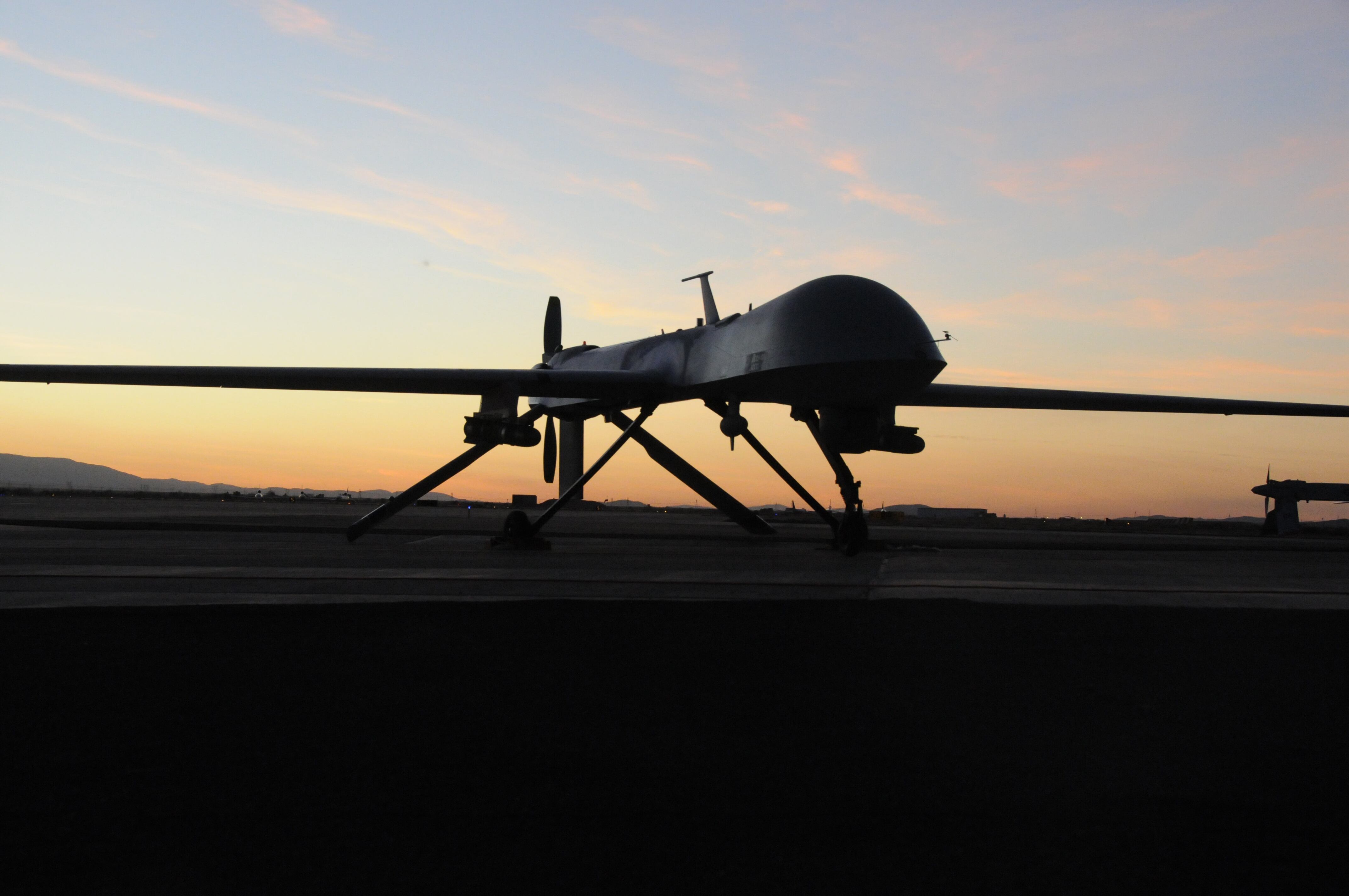The Air Force will officially retire its iconic, groundbreaking — and controversial ― MQ-1 Predator on March 9, officials at Creech Air Force Base said.
In a Wednesday release, Creech said that the Air Force will shift to entirely using MQ-9 Reapers for combat missions after the Predator’s sunset. The Air Force also flies unarmed RQ-4 Global Hawks for reconnaissance missions.
First Lt. Annabel Monroe, a spokeswoman for Air Combat Command, said that the Air Force is still figuring out what it will do with its retiring Predator fleet. Some could be transferred to Air Force museums, and the Air Force is exploring the possibility of transferring some to the Navy.
But the Air Force won’t sell them to private organizations, Monroe said, and does not expect to sell or give them to allied nations through the Excess Defense Article Program for Security Cooperation.
And while the active duty Air Force and Air National Guard will stop flying the MQ-1 after March 9, contractor flights in the Middle East will continue through December, she said.
The Predator was a landmark in the development of the military’s use of remotely-piloted aircraft. The Air Force first deployed the unarmed reconnaissance version of the Predator, the RQ-1, in Albania in July 1995, and also set up Air Combat Command’s first Predator unit that month.
The Predator had a checkered level of success in the early days. Creech said several RQ-1s were shot down early on, and others crashed due to infrastructure problems. But air crews kept tweaking the design to improve its flight capabilities, such as by adding helicopter missile pylons and switching to a more reliable turbo engine. It was also tweaked to do something it wasn’t originally intended to do: Carry and fire ordnance such as Hellfire missiles.
Unarmed Predators were used to scout Afghanistan beginning a week after the Sept. 11, 2001, attacks. And on Oct. 7, 2001, the day strikes on Afghanistan began, the first armed mission with a Predator was carried out — this one by the CIA, unsuccessfully targeting Taliban leader Mullah Mohammed Omar ― and it ushered in a new era of warfare. That Predator, tail number 3034, now hangs in the Smithsonian National Air and Space Museum.

In 2003, Creech said, the Air Force developed the ability to allow pilots to fly RPAs from across the globe. This “remote-split operation” tactic beamed signals to RPAs once they took off, allowing RPA pilots to conduct missions from stateside bases such as Creech.
RELATED

The Predator drone quickly became an iconic weapon ― and one steeped in controversy. The RPA’s ability to loiter for long periods watching potential targets, and then to fire precision-guided munitions without putting American or allied troops at risk, made it very attractive to the Pentagon. The Obama administration dramatically increased the number of drone strikes as a key part of its counterterrorism strategy.
But critics blasted President Obama for civilian casualties caused by Predator and other RPA strikes, which they said were much higher than the administration acknowledged.
Afghans even began weaving images of the Predator in their traditional “war rugs,” which previously incorporated images of Kalashnikovs, tanks, helicopters, and other Soviet weaponry from the USSR’s occupation.
In 2011, the Predator and Reaper combined marked their one millionth combat hour flown, about a decade after the Predator began flying in Afghanistan. In a sign of how much the military had grown to rely on RPAs, those drones hit 2 million combat flying hours two years later.
The Predator and Reaper also continued to play critical roles in Operation Inherent Resolve, the conflict against the Islamic State that began in 2014.
Stephen Losey is the air warfare reporter for Defense News. He previously covered leadership and personnel issues at Air Force Times, and the Pentagon, special operations and air warfare at Military.com. He has traveled to the Middle East to cover U.S. Air Force operations.



